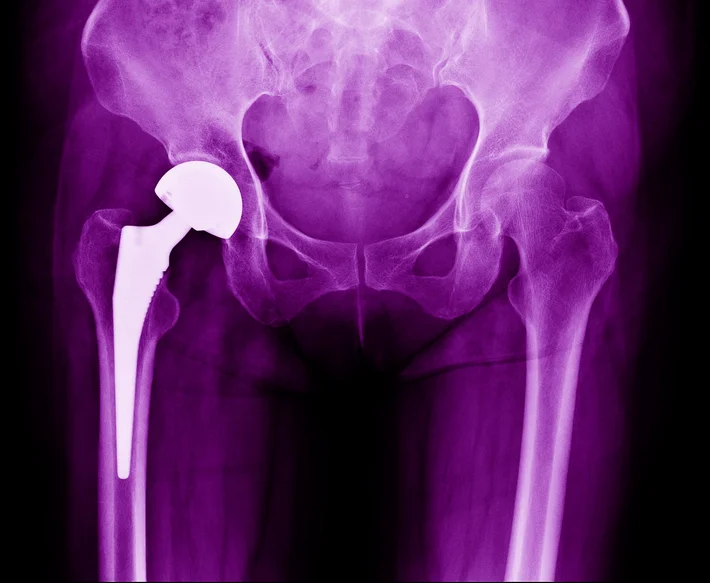The Hips Don’t Lie—It Could Be Time For a Joint Replacement

If your hip joint has been damaged due to osteoarthritis, rheumatoid arthritis, fracture, or another reason, your doctor may recommend you for hip replacement surgery (called total hip arthroplasty). They’re more common than you may think—surgeons performed more than 320,000 of these procedures in the United States in 2010. The good news? A newer surgical technique called anterior hip replacement is minimally invasive, which means a shorter hospital stay, less pain, and a faster recovery for you.
Traditionally, the surgery was performed by making an incision behind (posterior) or on the side (lateral) of the hip. According to Healthline, it’s more common for surgeons today to use the anterior approach—they make the incision in the front of the hip—thus causing less damage to the surrounding tendons and muscles.

The Benefits of Anterior Hip Replacement
Dr. Robin Fuchs, a board-certified orthopedic surgeon in Kirkland, Washington, notes that with an anterior hip replacement, patients have less pain within the first two weeks after surgery and can return to work an average of two weeks earlier.
And since the surgery can be performed on an outpatient basis, patients are usually home the same day. “You will feel better in your own home under the care of your loved ones,” says Dr. Fuchs. “With the right education and support, you are better off at home than in a hospital.”
According to Healthline, other advantages include:
- More functionality when you’re discharged to go home
- Fewer restrictions on activity after your surgery
- Lower risk of hip dislocation post-surgery
- Lower risk of different leg lengths after the hip replacement
Anterior hip replacement is also good on your wallet. A shorter hospital stay can save you—and the healthcare system—tens of thousands of dollars in costs.
How Physical Therapy Can Help
Physical therapy is an essential part of your healing journey. Initially, you’ll be educated on post-op precautions, therapeutic exercises, transfer and gait training (help with standing and walking), and instructions on the activities of daily living. For example, your surgeon may tell you to avoid bending over to pick up objects or tie your shoes.
Once you’ve regained an adequate level of functioning and your doctor has removed any surgical precautions, your physical therapist will set you up with a strengthening and flexibility program. To properly heal and return to your previous activity level, adhering to your prescribed exercises is crucial.
It’s Hip To Be Square With On-Demand PT!
However, the last thing you’ll want to do after surgery is to haul yourself to a clinic for a PT appointment. It’s completely understandable—you’re tired and sore and weak. On-demand physical therapy from Luna removes these obstacles by delivering convenient, expert care to your door within 48 to 72 hours of physician referral. Your on-demand PT can create an exercise program based on your actual environment, which means it’ll be easier for you to stick with your routine and feeling better, faster. And feeling better is what physical therapy is all about.




